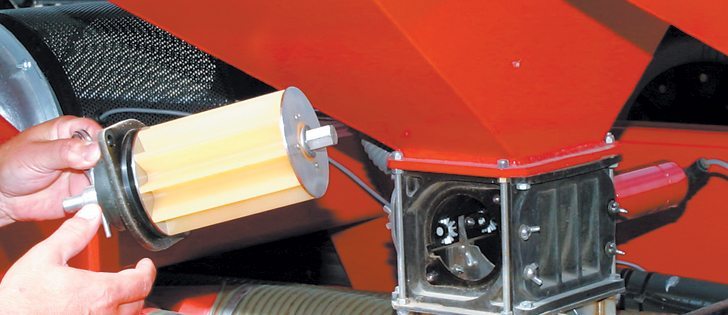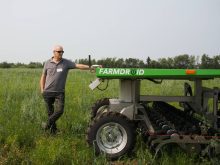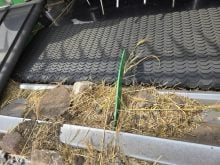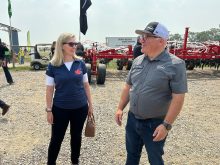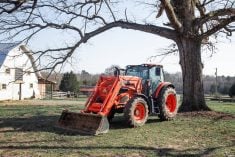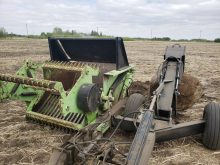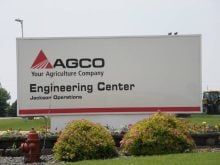Innovations Planters and drills are expected to adopt more precise electric drive systems
PORTAGE LA PRAIRIE, Man. — Electric drive systems will gradually become the norm as farmers demand greater precision in their seeding systems, says independent agricultural consultant Bill Lehmkuhl.
Lehmkuhl said when Kevin Anderson first installed Norac electric motors on his metering systems 15 years ago, he introduced a technology that will eventually become the standard of the industry.
“Electricity gives you instantaneous response,” he said.
“There’s no pause or hesitation. You can dial it in and very precisely fine tune your planter.”
Electric motors make variable rate and individual row unit control more viable, he added.
Read Also

Fertilizer method’s link to emissions studied
A researcher says others studying greenhouse gas emissions aren’t considering how the loss of nitrogen into the atmosphere correlates with fertilizer application or if there is an impact to yield.
Electric motors have a clear advantage over components typically operated by mechanical, hydraulic or pneumatic means as energy consumption on farm equipment becomes more of a factor.
“Electric motors are consistent and uniform from zero percent to 100 percent in both power delivery and r.p.m.,” he said.
“Regulation of electricity is more precise than any other power source. That makes it more accurate for any type of precision seed placement function on a planter or a drill. Electric drive metering is where the manufacturers will eventually go. They’ll be able to eliminate all those chains and sprockets and gears. They’ll do away with drive shafts and reduce hydraulic requirements and give the grower a better machine. The entire metering system will be simpler, with fewer parts.”
Lehmkuhl said centre pivot irrigation is a good example of how electrical control can work to the benefit of the grower. A lot of growers plant in a circle to match the pattern of the centre pivot wheels.
With electric metering, it’s possible to have individual control on each row unit. Inside row units travel a shorter distance with each lap of the field while outer row units travel a longer distance with each lap.
Individual meter control lets the operator write a prescription map that ensures uniform plant population. Every row unit is individually controlled so every foot of every row has exactly the same seed singulation and fertilizer rate.
“That will also eliminate a lot of these aftermarket add-on clutches. It’ll all be built right into the meter.”
Eliminating aftermarket equipment will not be good news for manufacturers specializing in that area. There’s probably no piece of farm equipment that is subject to as much modification as the corn planter. It’s no joke when people say a corn planter is nothing more than a platform on which to hang aftermarket products.
Farmers for whom corn is a secondary crop say the cost of a new planter forces them to keep fixing, modifying and upgrading the older unit. They say the aftermarket usually supplies good equipment.
Lehmkuhl said he had good results with some aftermarket kits on his farm in Ohio and not such good results with others. One of the modifications that stand out for him is the V-Set conversion kit that turns an older finger-style meter into a vacuum meter system.
A finger style meter might get close to 99 percent singulation when everything is brand new or freshly overhauled, but they quickly begin to lose their ability to singulate seed and the percentage drops.
“We had a Kinze finger planter,” he said.
“No matter what we did, the very best singulation we got coming off the meter was simply not very good. It was always under 98 percent. So we installed a V-set vacuum meter kit. After that, the planter would do 99.8 to 100 percent singulation. We got those results regardless of seed size, rounds versus flats, different seed rates, seed weight, it just didn’t matter. It was always close to 100 percent with the V-set.”
He said the conversion was not a big project. They added the vacuum fan and pipes to the planter, plus hoses to make the vacuum work. After that it was just a matter of bolting the meters to the bottom of the seed boxes.
The seed firmer is another option, which Lehmkuhl said is worth the money. This tongue-like springy device travels along the bottom of the seed trench to lightly pack down seed for better contact with the soil. The poly material lets it slide without collecting mud.
Lehmkuhl said serious corn growers understand the importance of seed depth, seed spacing and singulation. However, he said they’re not always as aware of the importance of tractor speed in the field.
“The smoothness of your planter’s ride is critical. Ride plays a big role in how accurately the metering system singulates the seeds,” he said.
“A rough ride makes the meter hang onto some seeds too long and bounces other seeds off too soon. A rough ride also affects how the seed goes down the seed tube. If you slow down so you feel a smoother ride, then your planter will do a better job for you.”
Lehmkuhl said automatic control of down force is a relatively new feature that helps corn growers achieve more precise seed placement.
John Deere and Precision have an active down force system driven by air. Precision also has a hydraulic down force system called Delta Force that has both lift and down pressure. Ag Leader and Dawn Equipment are working together on a hydraulic auto down force system.
Corn growers who strive for excellence in setting up their planters notice that each little improvement or adjustment puts more bushels in the bin. The ability to make adjustments from the cab has been a major step forward in allowing operators to fine tune their planters on the go.
For more information, contact Lehmkuhl at blehmkuhl@precisionagriservices.com.




